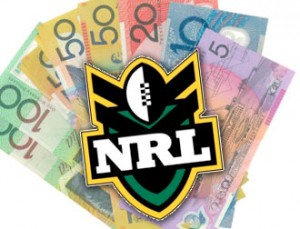 It is no secret that the NRL is running on an outdated salary system. The Salary structure that was introduced by the newly formed NRL in 1998 has not been updated since, and the league has continued to struggle retaining its stars as a result.
It is no secret that the NRL is running on an outdated salary system. The Salary structure that was introduced by the newly formed NRL in 1998 has not been updated since, and the league has continued to struggle retaining its stars as a result.
The good news is that the NRL commission is set to announce a new salary structure for 2015, with some short term issues to be resolved for 2014 season as well.
Although the commission already has an idea of what the new salary structure will entail, I’ve included some suggestions from other sports that not only help modernise the current system, but also allow the NRL to compete with other codes.
The Luxury Tax
Unlike other sporting codes, the NRL has to heavily compete with cashed up rivals when attempting to retain its superstars. Sports such as basketball, AFL and soccer/football don’t necessarily have to be concerned about losing a marquee player to another sport, as most of those codes are highly specialised.
Unfortunately Rugby League/NRL does not have that luxury and it seems that it’s always competing with the ARU and AFL whenever one its athletes demonstrate an incredible amount of talent.
Therefore a ‘luxury tax system’ or a ‘soft cap’ could be an option to help the NRL retain its stars, whilst also assisting teams to keep their marquee talent.
The luxury tax allows teams to spend over the salary cap threshold ($6.3million 2014) in order to retain a marquee player or keep a successful roster intact. However, this comes at a cost (of course).
Any team that spends over the $6.3million would need to give money back to the league. In the NBA, teams currently pay $1 for every dollar they are over and it increases every year for teams that are repeat offenders.
The theory is that teams spending above the luxury tax level are being reckless (and may be over-leveraging their big-market advantage), so they have to pay a fee for doing so. Those dollars are then piled up by the league, which distributes payments at the end of the season to those teams which are under the salary threshold.
This system allows those successful or big market teams to retain their stars, whilst also providing financial incentives to the smaller market teams. Of course the NRL would need the commission to review which team can enter the luxury tax threshold, as some may spend themselves out of the league. However, if properly regulated, the luxury tax will lower the likelihood of another Israel Folau fiasco, which saw Parramatta lose out on a marquee player while the NRL was working with an outdated model.
Restricted Free agency
One of the things that tick off many fans is the loss of their local talent. Far too often we have seen teams which have put a vast amount of resources into junior talent, get punished by losing those players to the big spending clubs.
The main issue here is that there aren’t any incentives for these clubs to pour money into local juniors, while the clubs losing these young players do not have the financial muscle to compete with the bigger teams.
The answer…..Restricted free agency.
Restricted free agency allows teams that have developed players through the 20s or the SG Ball system to have the final say on retaining these players, whilst also providing greater incentives for the players to stay.
Players who would qualify as restricted free agents are the ones who are signing their first professional contract, or a contract that would qualify them into the top 30 players of that roster. Restricted free agents can re-sign with their most recent team, or sign an offer sheet with a new team. But if they do the latter and sign an offer sheet elsewhere, then their previous team has the right to match the contract of that offer sheet and re-sign the player, whether the player wanted them to or not.
The team holding the restricted free agent rights would also be able to offer an extra year and 5% more on each year than any other team. The player would be able to include a ‘player option’ into the contract, which would mean that after a couple of seasons, the player would have ability to opt out and become an ‘unrestricted free agent’.
This option allows teams to have a better chance of retaining talent, whilst not punishing the player if he desired to leave. That player would also have the luxury of being able to attain an extra season onto his contract — inserting an ‘opt out clause’, while also earning more money.
The aforementioned options aren’t new and innovative ideas that I’ve come up with on my own, however, they are strategies modelled by one of the most profitable leagues (the NBA), that could make the NRL much more competitive.
